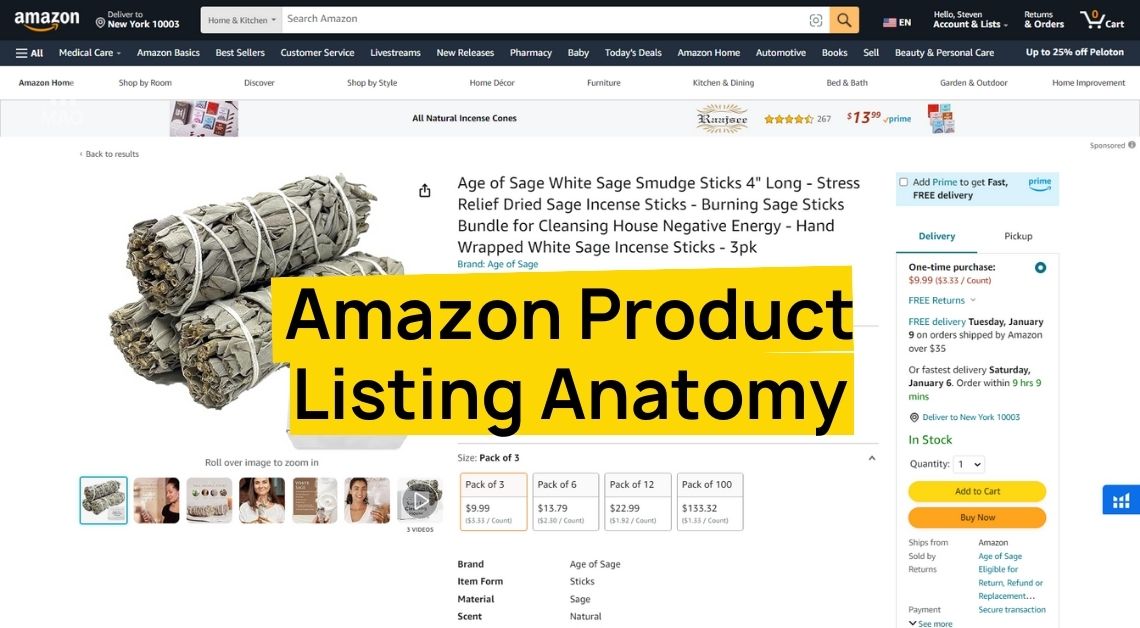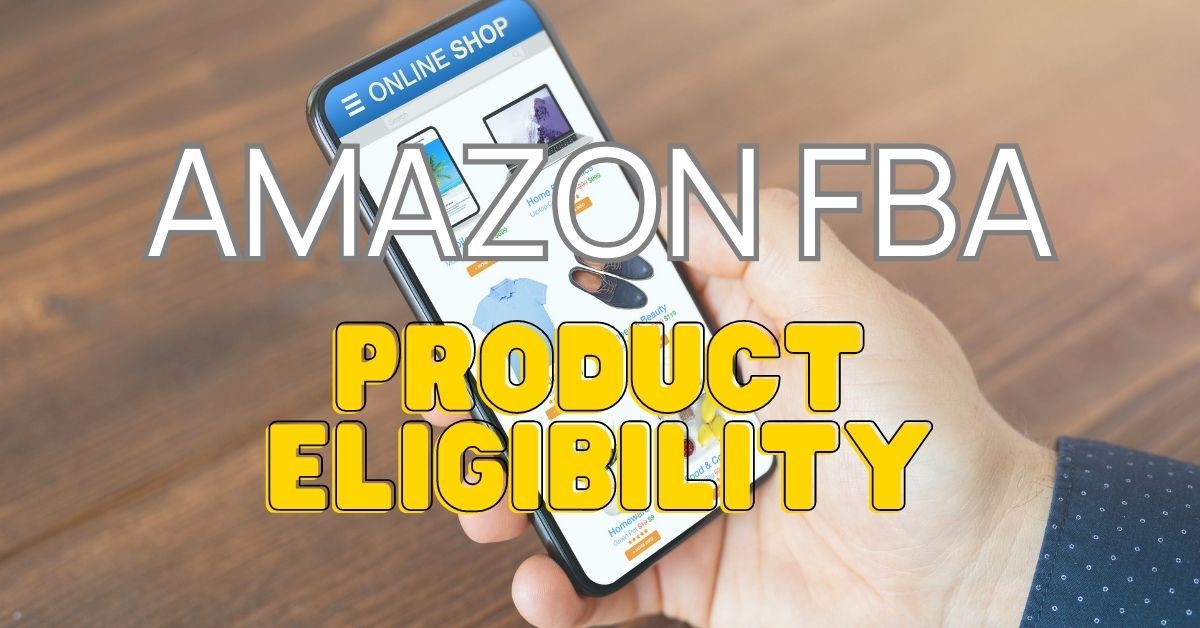Leveraging customer reviews on Amazon, in the ever-evolving world of fierce competition, can be your secret weapon to success. These valuable insights, shared by satisfied customers or vocal critics, can significantly impact your Amazon rankings, sales, and overall business growth.
Join us as we delve into the strategies that can set you apart in this thriving marketplace through the power of customer reviews.
Leveraging Customer Reviews On Amazon: Impact on Amazon Rankings
The role of customer reviews in Amazon’s algorithm
Customer reviews play a significant role in Amazon’s algorithm, also known as the A9 algorithm, for a number of reasons:
- Product Ranking: The more positive reviews a product has, the higher it tends to rank in search results. This is because Amazon’s algorithm sees positive reviews as a sign of a product’s popularity and quality.
- Customer Trust: Products with a higher number of positive reviews are more trusted by customers. Amazon’s algorithm takes this into account, placing such products higher in search results to enhance the customer experience.
- Sales Velocity: Positive reviews can lead to an increase in sales, which is another factor that Amazon’s algorithm considers when ranking products. The more a product sells, the higher it will rank.
- Feedback for Improvement: Reviews, both positive and negative, can provide valuable feedback for sellers. This allows them to make necessary improvements to their products, which can ultimately lead to more positive reviews and a higher ranking.
- Verified Purchase Reviews: Amazon’s algorithm places a lot of weight on “verified purchase” reviews. These are reviews left by customers who purchased the product directly from Amazon. These reviews are seen as more trustworthy and can significantly influence a product’s ranking.
Remember, while customer reviews are important, they are just one of many factors that the Amazon algorithm considers when ranking products. Other factors include price, sales history, product availability, and relevance to the search query.
How positive reviews can boost your product’s visibility
Positive reviews can boost your product’s visibility in a number of ways.

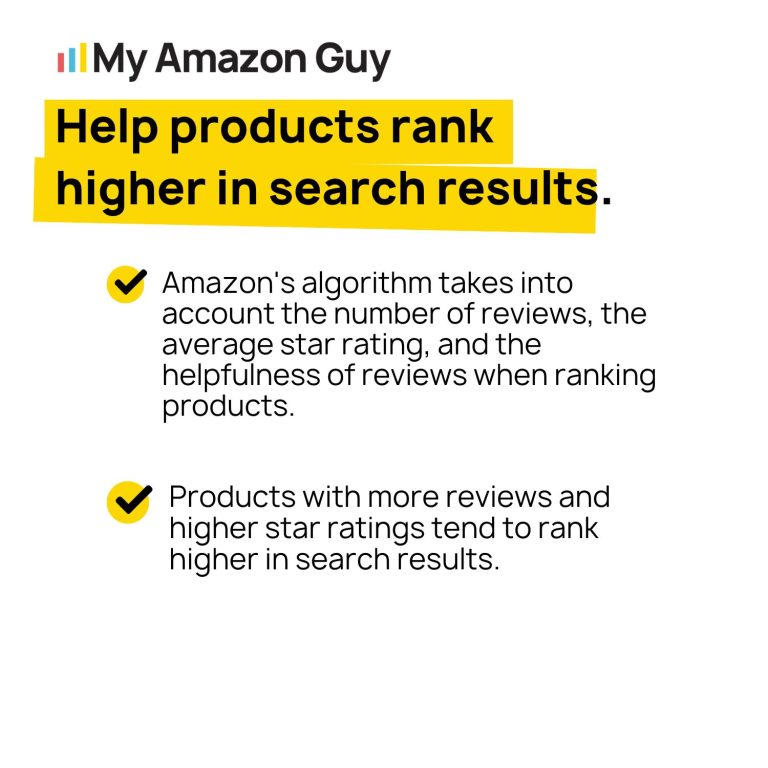
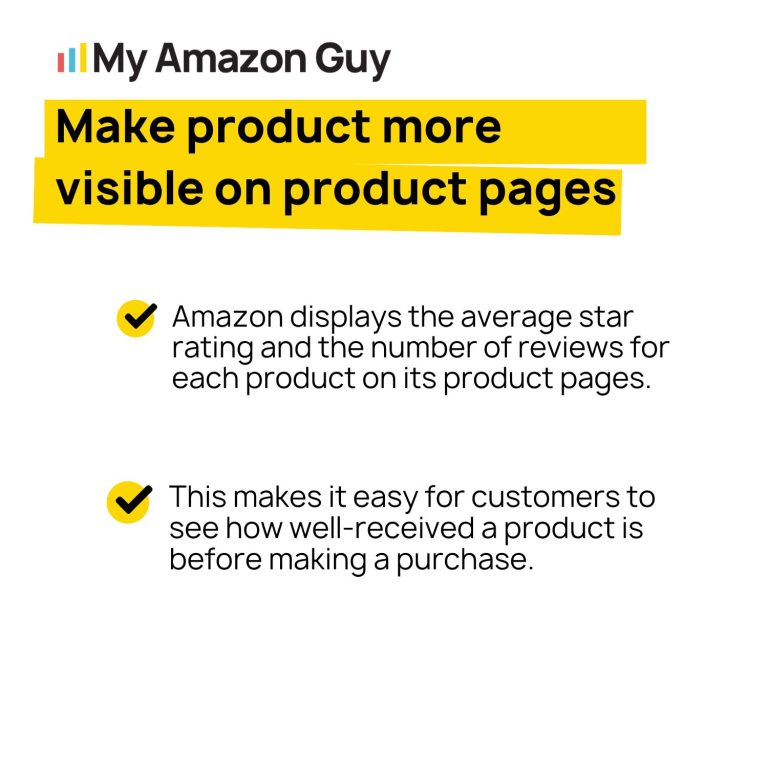
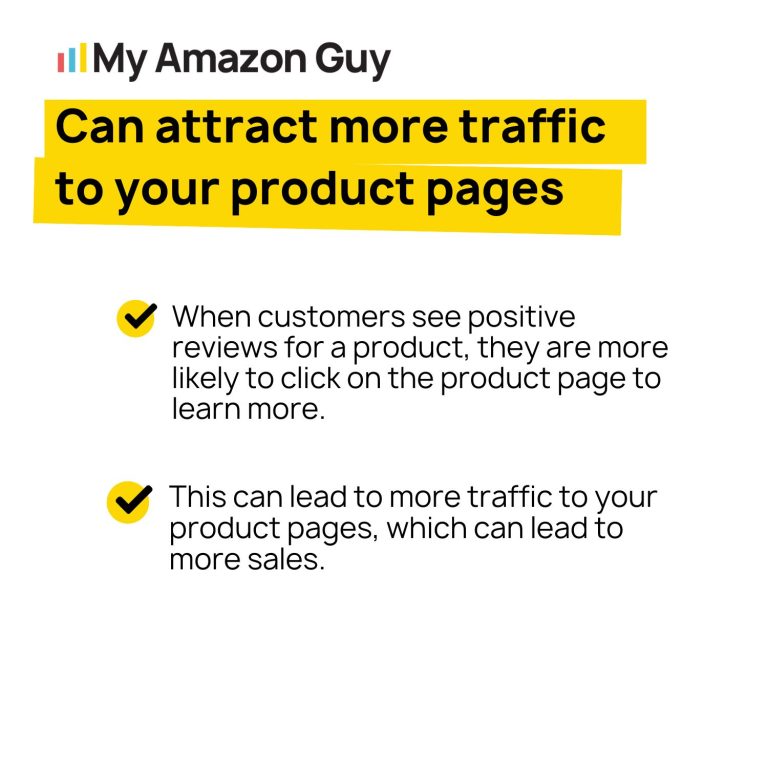
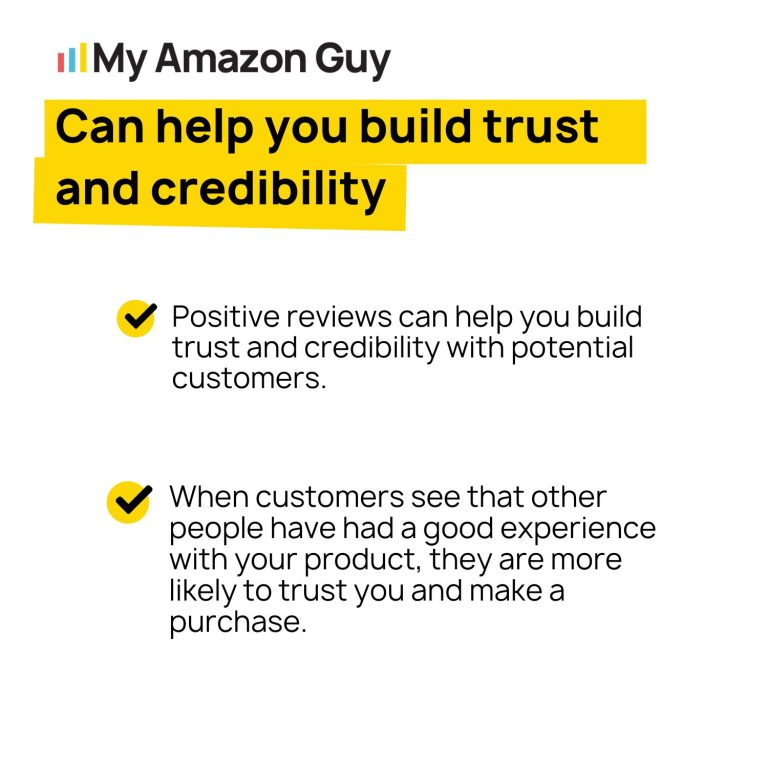
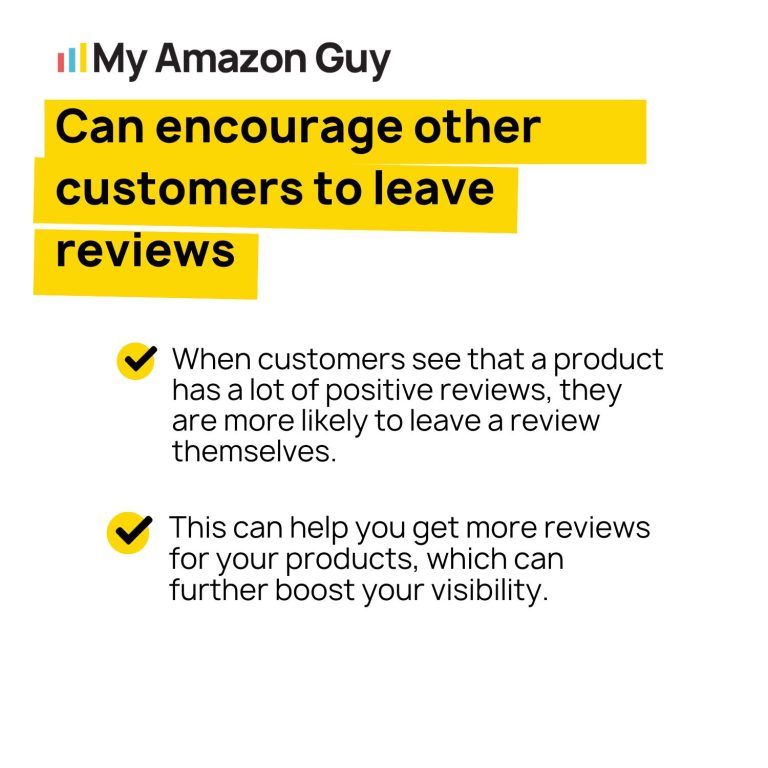
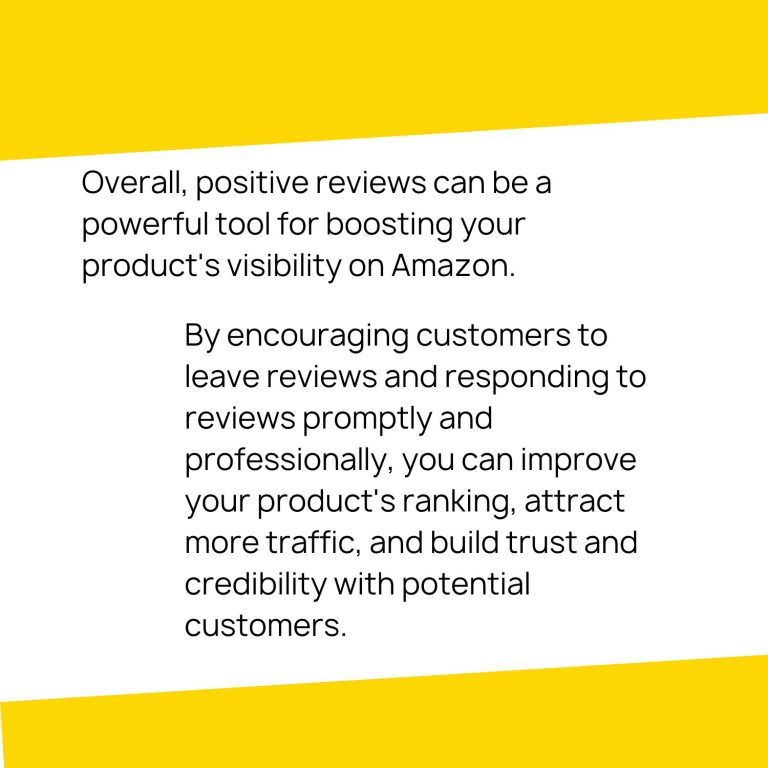
The correlation between the number of reviews and ranking
The number of reviews a product has on Amazon can significantly impact its ranking. Here’s how:
- Improved Search Engine Rankings: Amazon’s A9 algorithm considers the number of reviews when determining a product’s ranking. Products with a higher number of reviews, particularly positive ones, are likely to rank higher in search results.
- Increased Consumer Trust: A product with a high number of reviews typically indicates that it is popular and trusted by consumers. This can lead to more clicks and purchases, which further improves the ranking.
- Boosted Sales Velocity: More reviews often lead to more sales, and this sales velocity is another critical factor in Amazon’s ranking algorithm. A product that sells more frequently will typically rank higher than similar products with fewer sales.
- Visibility in ‘Top Rated’ and ‘Most Wished For’ Lists: Products with a high number of positive reviews can appear in Amazon’s ‘Top Rated’ and ‘Most Wished For’ lists, which can significantly increase their visibility and ranking.
While the number of reviews can correlate to higher rankings, it’s important to note that the quality of reviews also plays a significant role. A product with fewer but highly positive reviews can sometimes outrank a product with more reviews but a lower average rating. Amazon’s algorithm is designed to prioritize the customer experience, so products that are well-received by customers tend to rank higher.
Leveraging Customer Reviews On Amazon: Quality of Reviews
What does “quality of reviews” refer to?
The quality of reviews typically refers to several key elements:
- Detail and Relevance: High-quality reviews provide specific, detailed feedback about the product or service. They focus on the features, functionality, and performance, and how these aspects met the customer’s needs or expectations.
- Helpfulness to Other Customers: A quality review is not just about sharing an opinion, but also about helping other customers make informed purchase decisions. This means including information that others might find useful or relevant.
- Accuracy and Honesty: Quality reviews accurately reflect the customer’s experience, both positive and negative. They are honest, fair, and not misleading, providing a balanced view of the product or service.
- Clarity and Coherence: Good reviews are well-written and easy to understand. They are logically structured, use clear language, and avoid unnecessary jargon.
- Constructive Criticism: When the review is negative, a quality review provides constructive feedback. Rather than just complaining, it offers suggestions for improvement, helping the seller or manufacturer understand how they can improve the product or service.
- Compliance with Review Guidelines: Quality reviews also adhere to Amazon’s review guidelines. They do not contain promotional content, offensive language, or personal information, and they are related to the product or service in question.
Remember, while sellers can encourage customers to leave reviews, they should not attempt to influence the content of the review in any way. This can lead to penalties from Amazon.
Why is the quality of reviews important?
The quality of reviews on your product listings on Amazon is crucial for several reasons:

How do I determine the quality of my customer reviews on Amazon?
Determining the quality of your customer reviews on Amazon involves understanding and evaluating several key factors:
- Rating: The star rating gives an immediate indication of customer satisfaction. A higher average rating suggests better quality reviews and overall customer satisfaction.
- Content: Analyze the content of the reviews. High-quality reviews are detailed, provide specific feedback about the product, and help other customers make informed decisions.
- Relevance: Check if the reviews are relevant to the product. They should discuss the product’s features, performance, and value, not irrelevant topics or issues related to delivery.
- Constructive Criticism: Even negative reviews can be high quality if they provide constructive feedback on how to improve the product.
- Verified Purchase: Reviews marked as “Verified Purchase” are generally considered more trustworthy, as they confirm the reviewer actually bought the product from Amazon.
- Helpfulness Votes: Amazon allows customers to vote on whether a review was helpful. A high number of “helpful” votes can indicate that a review is high quality.
- Review Frequency: Regular and recent reviews can indicate a consistent level of product quality and customer satisfaction.
Leveraging Customer Reviews On Amazon: Requesting Customer Reviews
Amazon does not require sellers to request reviews from customers because it already does this on your behalf. To request a review for a specific order, we recommend using the “Request a review” feature found on the Order Details page. Instead of reaching out to the customer via email or Buyer-Seller Messaging, this method offers several advantages:
- Combined Requests: When you use this feature, both a product review and seller feedback are requested in the same email. These requests utilize standardized language and are automatically translated into the customer’s preferred language.
- Timing: You can utilize this feature to request reviews once per order, and it’s best done between 5 and 30 days after the order’s delivery date. This ensures that customers receive relevant and timely review requests, enhancing the likelihood of their participation.
Watch this video where Steven Pope, founder of My Amazon Guy, shares a review generation strategy:
Leveraging Customer Reviews On Amazon: Encouraging Customers to Leave Reviews
Importance of post-purchase follow-up emails
Post-purchase follow-up emails play a crucial role in your Amazon business for several reasons:
- Enhance Customer Experience: Follow-up emails can provide additional value to customers, such as usage tips for the product, or simply thanking them for their purchase. This can enhance their overall shopping experience.
- Encourage Reviews: Politely asking for a product review in a follow-up email can help increase the number of reviews you receive. More reviews can boost your product’s visibility and ranking on Amazon.
- Address Issues Proactively: By checking in with customers, you can address any issues or concerns they might have before they leave a negative review. This allows you to turn potentially negative experiences into positive ones.
- Build Customer Loyalty: Follow-up emails show customers that you value their business and care about their experience. This can help to build customer loyalty and increase the likelihood of repeat purchases.
- Collect Valuable Feedback: Feedback received through follow-up emails can provide valuable insights into how your product is being received, and can highlight areas for improvement.
- Promote Other Products: Once you have established a relationship with the customer, follow-up emails can also be used to introduce other products you sell that might interest them.
Providing excellent customer service to generate reviews
Providing excellent customer service is a strategic way to generate more reviews on Amazon. Here’s how you can approach it:
- Be Proactive: Reach out to customers after they have received their order to ensure everything is satisfactory. This can help solve any issues before a possible negative review and shows you value their feedback.
- Prompt and Polite Communication: Respond to customer inquiries in a timely and polite manner. Quick, effective responses can leave a positive impression and encourage customers to leave a review.
- Solve Issues Effectively: If a customer has a problem, resolve it promptly and effectively. Customers appreciate sellers who are committed to their satisfaction and may express this in their review.
- Ask for Reviews: After providing excellent service, it’s okay to ask customers to leave a review. However, remember to stay within Amazon’s guidelines – don’t pressure or incentivize them to leave a review.
- Continuous Improvement: Use customer feedback to continuously improve your customer service. Demonstrating commitment to improvement can lead to positive reviews.
- Follow-up: After resolving any issues, follow up with the customer to ensure they are satisfied with the solution. This extra step can enhance their overall experience and potentially lead to a positive review.
Here’s another video where you could learn about contacting buyers for their reviews:
Can I offer incentives to get customer reviews?
No, offering incentives for reviews is against Amazon’s policies. Amazon’s guidelines are designed to maintain the trust and integrity of reviews on the platform. They explicitly prohibit any kind of manipulation of product reviews. This includes offering incentives like discounts, free products, or cash in exchange for reviews.
Violating these guidelines can lead to severe penalties, such as suspension or termination of your seller account. It’s important to encourage reviews in an ethical and compliant way, such as by providing excellent customer service, selling high-quality products, and politely asking customers to leave a review after their purchase without offering any form of compensation.
Leveraging Customer Reviews On Amazon: Dealing with Negative Reviews
Responding to negative reviews
Responding to negative reviews can be a delicate task. Here are some best practices to follow:
- Respond Promptly: Customers appreciate a quick response. This shows them that you take their feedback seriously and are committed to resolving their issues.
- Stay Professional: Always maintain a professional tone, even if the review is harsh or unfair. Avoid getting defensive or argumentative.
- Apologize and Show Empathy: Start your response by apologizing for the negative experience. This shows the customer that you genuinely care about their satisfaction.
- Address the Issue: Acknowledge the specific issue mentioned in the review and provide any additional context if necessary.
- Propose a Solution: Whenever possible, propose a solution to the problem. This might involve a refund, replacement, or steps to fix the issue.
- Take the Conversation Offline: If the issue is complex, consider asking the customer to contact you directly. This allows you to address the issue in more detail without airing all of the specifics publicly.
- Learn from the Feedback: Use negative reviews as an opportunity to improve. If you notice a trend in the complaints, consider how you might modify your product or service to better meet customer expectations.
To know more about how to manage negative reviews, here are some videos you can watch:
Can negative reviews help build credibility?
Yes, negative reviews can, paradoxically, help build credibility for your Amazon listings for several reasons:
- Realistic Expectations: Negative reviews can help set realistic expectations for potential buyers. They provide a balanced view of the product, which can prevent future negative reviews from customers who had unrealistic expectations.
- Authenticity: A mix of positive and negative reviews can make your product reviews appear more authentic. If a product only has positive reviews, customers may be skeptical and question their legitimacy.
- Improvement Opportunities: Negative reviews can highlight areas where your product or service can be improved. By addressing these issues, you can enhance your product and customer satisfaction over time.
- Trustworthy Response: How you respond to negative reviews also matters. A professional and thoughtful response to a negative review can demonstrate to customers that you value their feedback and are committed to resolving issues, which can build trust.
- Decision Making: Some customers specifically look for negative reviews while making their buying decision. They want to know the worst-case scenario before making a purchase.
While no seller wants negative reviews, they are a normal part of doing business and can be used strategically to improve and grow. However, it’s important to aim for predominantly positive reviews by offering high-quality products and excellent customer service.
Leveraging Customer Reviews On Amazon: Track Your Reviews
Is there a tool in Seller Central for tracking customer reviews?
Yes, the Customer Reviews page offers brands a convenient means of monitoring all new customer reviews for their products and extending assistance to buyers when the star rating falls below four.
This monitoring of customer feedback serves as a crucial step in identifying and rectifying product or listing issues, as well as detecting and reporting instances of abuse.
By providing support or solutions to dissatisfied customers, you can enhance overall customer satisfaction.
It’s important to note that this feature is exclusively accessible to sellers who are registered as brand owners. If you do not have access to this feature, it indicates that you haven’t been verified as a brand owner.
Accessing the Customer Reviews Page
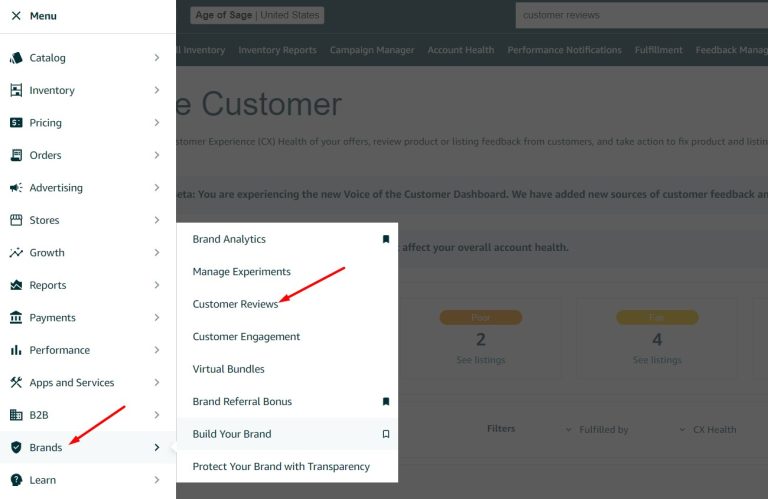
- In Seller Central, go to Brands > Customer Reviews.
- You have the option to filter customer reviews based on their star rating, brand (this applies when the brand owner is a “Brand Representative” for multiple brands), or specific time periods. Simply utilize the filters located at the top right corner to refine your search and access the reviews that matter most to you.
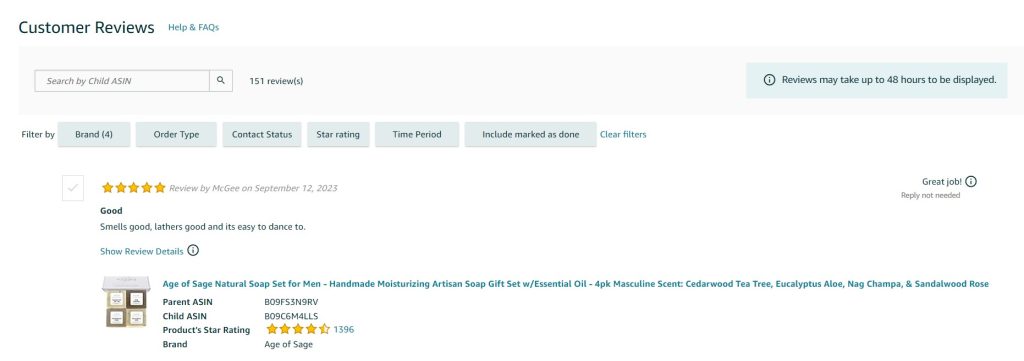
- When you are the seller of record for a transaction that has generated a critical review from a verified purchase, you will notice the “Contact Buyer” option at the top right of the critical review. Upon clicking “Contact Buyer,” you will be presented with two choices:
Courtesy Refund: This option allows you to offer a full courtesy refund to the buyer.
Customer Support: Selecting this option enables you to engage with your customer to seek clarification on any product issues mentioned in their review. This provides an opportunity to address their concerns and provide assistance.
- If you opt for a “Courtesy Refund,” the system will automatically generate an email offering a full refund to the customer.
However, if you find that you need to gather additional information from the customer before providing assistance, you should choose “Customer Support” as the contact reason. In this case, an automated email will be generated, seeking the customer’s permission to be contacted via the Buyer-Seller messaging system. Once you’ve made your selection, simply click “Send” to initiate the appropriate communication.
- Customers will be able to view the message within the Message center in Your Account page. When a customer replies to the brand owner’s message, a buyer-seller message will be generated in Seller Central within the Messages page.
Leveraging Customer Reviews On Amazon: Voice of the Customer
This is a page in Seller Central where you can harness feedback from your customers to enhance the performance of your products and listings. Here, you have the ability to:
- Stay Updated: Review recent updates related to the page’s functionality and features.
- Customer Experience (CX) Health: Monitor the health of your offers from a customer experience perspective, allowing you to gauge how well your products and listings are being received.
- Customer Comments: Access and read the comments and feedback provided by customers, gaining valuable insights into their perspectives and concerns.
- Issue Identification: Identify any product or listing issues that are raised by customers through their feedback.
- Resolution: Take proactive steps to resolve these problems and improve the overall customer experience.
Customer Experience Health
CX Health, or Customer Experience Health, is a crucial metric that provides insights into how well your offers are performing in comparison to similar offers. It’s based on a combination of recent orders and customer feedback regarding your products.
Understanding your offers’ CX Health is valuable because it helps you pinpoint the underlying causes of various issues, including but not limited to mislabeled, damaged, or defective products, as well as inaccurate or incomplete detail pages. Once you identify these problems, you can take proactive measures to address and rectify them.
CX Health is typically categorized into five levels: excellent, good, fair, poor, and very poor. We strongly recommend paying special attention to offers with poor and very poor CX Health ratings, as these are indicative of areas where improvements are needed. By addressing these issues, you can enhance the overall customer experience and boost your product’s performance.
Here’s a video you can watch that details about the Voice of the Customer:
Leveraging Customer Reviews On Amazon: Verified Purchase Reviews
What are verified purchase reviews
A Verified Purchase review on Amazon signifies that the customer who wrote the review purchased the product from Amazon and didn’t receive the product at a deep discount. Amazon marks these reviews with an orange “Verified Purchase” badge to indicate the authenticity of the review.
These reviews carry more weight because they are from actual buyers who have used the product and can provide genuine feedback. They help potential buyers to make informed decisions and also increase the credibility of the product and the seller. Amazon’s algorithm also favors verified purchase reviews when calculating the overall star rating of a product.
Amazon’s aim is to maintain the integrity of reviews and prevent any manipulation or deceitful practices. Therefore, it gives more importance to “Verified Purchase” reviews in its system.
Why verified reviews matter to customers and sellers?
Verified Purchase reviews play a significant role for both customers and sellers on Amazon.
For Customers:
- Trustworthiness: Verified reviews are seen as more trustworthy because they confirm that the reviewer actually purchased and used the product. This reduces the chance of fake or sponsored reviews.
- Authentic Experience: These reviews provide a genuine user experience, which can help potential buyers make informed decisions.
- Quality Insight: Verified reviews can give potential buyers insights into the quality and functionality of the product.
For Sellers:
- Credibility: Verified Purchase reviews enhance the credibility of the seller and the product, which can increase customer confidence and potentially boost sales.
- Feedback: These reviews provide valuable feedback for sellers. They can use this information to improve their products and address any issues highlighted by customers.
- Ranking: Amazon’s algorithm gives more weight to Verified Purchase reviews when calculating the overall star rating of a product. This can influence product visibility and ranking in search results.
Leveraging Customer Reviews On Amazon: Analyzing Your Reviews for Product Improvement
Using feedback from reviews to improve your product
Customer reviews are a valuable source of feedback that can help you improve your product. Here are some tips on how to use feedback from reviews to improve your product:
- Collect feedback from a variety of sources. Don’t just rely on reviews from Amazon or your website. Collect feedback from social media, email, and customer support.
- Analyze the feedback carefully. Look for patterns and trends in the feedback. What are the most common complaints? What are the most positive comments?
- Prioritize the feedback. Not all feedback is created equal. Some feedback will be more important than others. Prioritize the feedback that will have the biggest impact on your product.
- Take action on the feedback. Don’t just collect feedback and then forget about it. Take action on the feedback that you receive. This could mean making changes to your product, your marketing, or your customer service.
- Be transparent with your customers. Let your customers know that you are listening to their feedback and that you are taking action to improve your product. This will show your customers that you care about their satisfaction.
Here are some specific examples of how you can use feedback from reviews to improve your product:
- If you receive a lot of complaints about the quality of your product, you can improve the quality of your materials or manufacturing process.
- If you receive a lot of positive comments about a particular feature of your product, you can highlight that feature in your marketing materials.
- If you receive feedback that your product is difficult to use, you can make it easier to use by providing better instructions or by redesigning the product.
The importance of continually updating your product based on reviews
Customer reviews are a valuable source of feedback that can help you improve your product. By continually updating your product based on reviews, you can:
- Improve the quality of your product. Customer reviews can help you identify areas where your product can be improved. For example, if you receive a lot of complaints about the quality of your product, you can make changes to the materials or manufacturing process.
- Make your product more user-friendly. Customer reviews can help you identify areas where your product is difficult to use. For example, if you receive feedback that your product is difficult to assemble, you can provide clearer instructions or create a video tutorial.
- Meet the needs of your customers. Customer reviews can help you identify what features your customers are looking for in your product. For example, if you receive a lot of requests for a particular feature, you can add that feature to your product.
- Stay ahead of the competition. Customer reviews can help you identify areas where your product is falling short compared to the competition. For example, if you receive feedback that your product is more expensive than the competition, you can look for ways to reduce your costs.
- Build trust with your customers. When you continually update your product based on reviews, you show your customers that you are committed to providing them with the best possible product. This can help you build trust and loyalty with your customers.
Leveraging Customer Reviews On Amazon: Utilizing Customer Reviews to Understand Your Market
How reviews provide insight into your target audience
Customer reviews are a valuable source of information about your target audience. By reading and analyzing customer reviews, you can learn about your customers’ needs, wants, and pain points. You can also use customer reviews to identify opportunities to improve your products and services.
Here are some specific ways that reviews can provide insight into your target audience:
- Demographics: Customer reviews can reveal the demographics of your target audience, such as their age, gender, location, and income level. This information can help you target your marketing efforts more effectively.
- Pain points: Customer reviews can also reveal the pain points of your target audience. This information can help you develop products and services that address their needs.
- Motivations: Customer reviews can also reveal the motivations of your target audience. This information can help you create marketing messages that resonate with them.
- Preferences: Customer reviews can also reveal the preferences of your target audience. This information can help you choose the right marketing channels and develop products and services that they are likely to be interested in.
- Behavior: Customer reviews can also reveal the behavior of your target audience. This information can help you understand how they interact with your products and services.
Using reviews to identify unmet customer needs
Here are some specific ways to use reviews to identify unmet customer needs:
- Look for common complaints. What are the most common complaints that customers are making? These complaints may indicate unmet needs.
- Pay attention to the negative reviews. Even negative reviews can be valuable, as they can often provide insights into what customers are not getting from your products or services.
- Compare your reviews to the reviews of your competitors. This will help you identify areas where you can differentiate yourself from your competitors and meet the needs of your customers better.
- Ask customers directly. You can also ask customers directly about their needs and pain points. This can be done through surveys, interviews, or focus groups.
Leveraging Customer Reviews On Amazon: Understanding Amazon’s Review Policies
Overview of Amazon’s review policies
Amazon has strict review policies to ensure the integrity of reviews on the platform. Understanding these policies is crucial for sellers as violations can lead to penalties, including suspension of selling privileges. Here is an overview:
Amazon’s Review Policies for Sellers
- No Paid Reviews: Sellers cannot offer any form of compensation (money, free or discounted products, or other benefits) in exchange for a review. This includes using third-party services that sell reviews.
- No Review Manipulation: Sellers cannot attempt to influence the content of a review (positive or negative), the star rating, or create fake reviews.
- No Review Trading: Sellers cannot review their own products or a competitor’s products, or trade reviews with other sellers.
- Family and Friends: People who have a close personal relationship with the seller cannot write a review of the seller’s product.
- Verified Purchase: Amazon gives more weight to reviews from verified purchases – when the product was purchased at Amazon at a price close to the regular price.
- Communication with Buyers: The Buyer-Seller Messaging Service in Amazon allows sellers to communicate with buyers either through Seller Central or their authorized email accounts, with all correspondence tracked on the Buyer-Seller Messages page for easy management. This offers sellers flexibility and a centralized platform for interacting with customers.
Here are some related videos you can watch:
How to report policy violations
If you come across a review or any other activity on Amazon that you believe violates Amazon’s policies, you can report it to Amazon. Here are the steps:
Steps to Report Policy Violations on Amazon
- Identify the Violation: Make sure the activity you’re reporting is a clear violation of Amazon’s policies.
- Go to the Product Page: If it’s a review violation, navigate to the product detail page where the review is located.
- Report the Review: Scroll down to the review in question and click on the “Report abuse” link located next to the review.
- Fill Out the Form: Amazon may ask you to provide more information about the violation. Be specific and concise in your explanation.
For other types of policy violations, you can report them through Seller Central:
- Go to Seller Central: Login to your Seller Central account.
- Navigate to Help: Click on ‘Help’ at the top right corner of the page.
- Contact Us: Scroll down and click on ‘Contact Us’ at the bottom of the page.
- Report a Violation: Click on ‘Selling on Amazon’, then ‘Report a violation’ and fill out the form with the necessary details.
Conclusion
Leveraging customer reviews on Amazon can help sellers achieve success on the marketplace. Here are some reasons why:
- Customer reviews can help you attract new customers. When potential customers see that other people have had a positive experience with your product, they are more likely to trust you and buy from you.
- Customer reviews can help you increase sales. Studies have shown that products with more positive reviews tend to sell more than products with fewer reviews.
- Customer reviews can help you improve your products and services. By reading and responding to customer reviews, you can learn about what your customers like and dislike about your products and services. This information can help you make improvements that will make your customers happier.
- Customer reviews can help you build trust and credibility. When potential customers see that you have a lot of positive reviews, they are more likely to trust you and do business with you.
- Customer reviews can help you rank higher in Amazon search results. Amazon uses customer reviews as a factor in determining search rankings. This means that products with more positive reviews are more likely to appear higher in search results, which can lead to more sales.
Best Practices for Leveraging Customer Reviews On Amazon
- Encourage Reviews: While you can’t ask for positive reviews or offer incentives, you can encourage customers to leave a review. This can be done through follow-up emails or inserts in your product packaging reminding customers to share their experience.
- Respond to Reviews: Amazon allows sellers to respond to reviews. This is an opportunity to address any issues and demonstrate that you value customer feedback. Always respond professionally and constructively.
- Monitor Reviews Regularly: Regularly check your product reviews for valuable insights and to identify any recurring problems that need to be addressed.
- Use Feedback to Improve: Use the feedback in reviews to improve your product and address any issues. This can help to increase customer satisfaction and lead to more positive reviews.
- Highlight Positive Reviews: Use positive reviews in your product descriptions, images, or bullet points (without violating Amazon’s policies) to highlight the benefits of your product.
- Report Policy Violations: If you see a review that violates Amazon’s policies (e.g., offensive language, feedback about price or availability, etc.), report it to Amazon.


